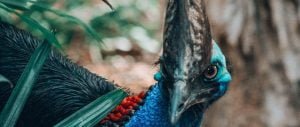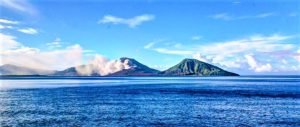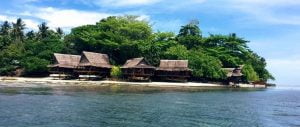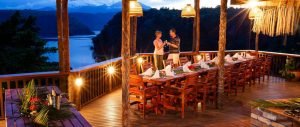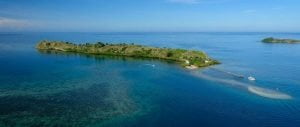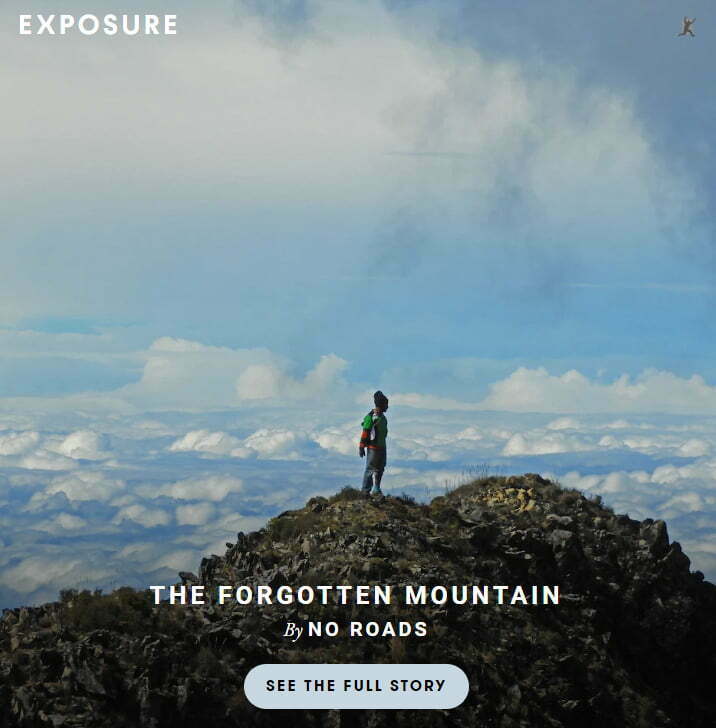GILUWE SUMMIT TREK
7 Days 3200 ex Port Moresby

Accommodation
4 Nights Camping
2 Nights Hotel

Transportation
Mostly on foot
Vehicle transfers, return flight to Port Moresby

Included Meals
6 Breakfasts
4 Lunches
4 Dinners
“Have you heard of the Giant of Giluwe?”
I wasn’t sure what Nathan was talking about.
“The Giant of Giluwe! You can see signs of him everywhere on this mountain. See down into that valley? All those small ponds, they were made by the Giant’s feet as he wanders across the grasslands.”
He was right, there were thousands of small tarns scattered across the valley floor. The dimming daylight reflected their mercurial surfaces emphasising their abundance. Were these made by a retreating glacier or what Nathan suggests, a Giant?
We were still a couple of hours from camp, on the slopes of the highest volcano in Oceania and the sun was rapidly descending towards its home for the evening.
“We must hurry on, we don’t want to be out in the night. The Giant may step on us.” Nathan chuckled and then swiftly moved on toward our camp.
“Broke Camp 44 at daylight on the 15th (June). Heavy frost during the night and the numerous small water holes which dot the top of the mountain from the 10,000 to the 12,000-foot level were ice covered. Reached the 12,200-foot level at 9 am. From 12,000 feet to the top, 13770 feet, was a very steep climb, reaching it at 11 am. On the southwest side of the mountain, it fell away 3000 feet in an almost straight drop.”
Michael Leahy June 1934
It is hard to imagine that new territories were still being discovered less than 100 years ago in Papua New Guinea. The account of the Leahy brothers and their travels of exploration throughout the highlands of PNG in the 1930s takes us to a time and a place very foreign to us today.
However, there are still adventures to be had in this amazing country of PNG. We were the first company to not only climb Giluwe but also undertake the full traverse of Giluwe. While the Leahy brothers climbed it from the east, as far as we know, no one had walked across from the east and down the western slope until 2017. Maybe this is because of the “3000-foot” drop-off on the west side. Maybe it is also to do with the massive forested area from the west that has prevented approaches from that side.
Mt Giluwe is PNG’s second-highest mountain at 4367 m (or 14327 feet, substantially higher than Michael Leahy first thought). It is the highest volcanic peak in Oceania and forms one of the “Seven Highest Volcanos” on the planet. (Highest volcano on each of the seven continents). With its enormous open plains, Giluwe affords incredible views in a full 360 degrees. Jagged peaks formed by ancient volcanic vents and tarns formed by retreating glaciers create a landscape of prehistoric proportions.
In parenthesis, the Leahy brothers never mentioned a sighting of a giant.
“At 12,000 feet we began the final climb through the clumpy grass. The rare air slowed us, and we climbed in bursts of 40 or 50 feet before collapsing on the grass for a rest. “The last 1,500 feet were the hardest and steepest.”
Michael Leahy 1934, PNG
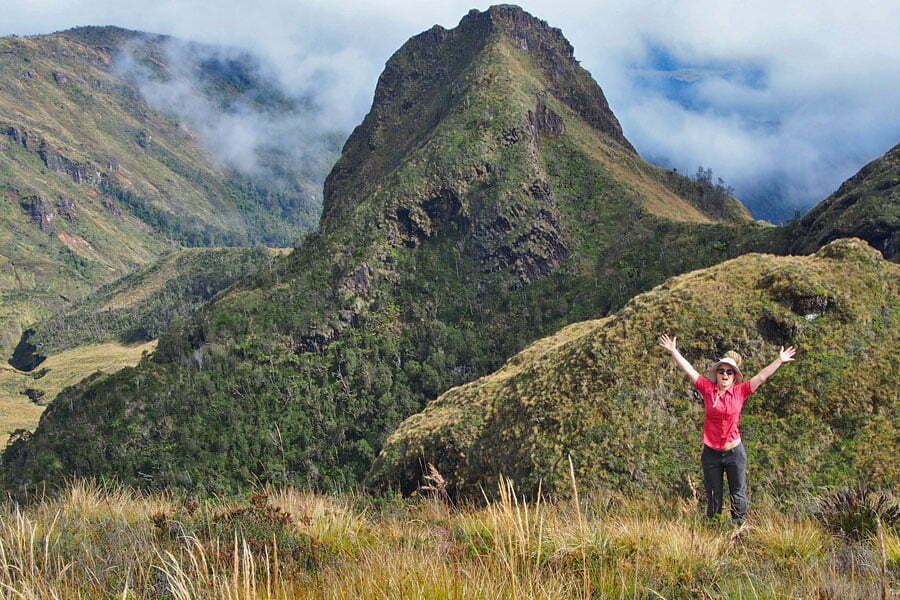
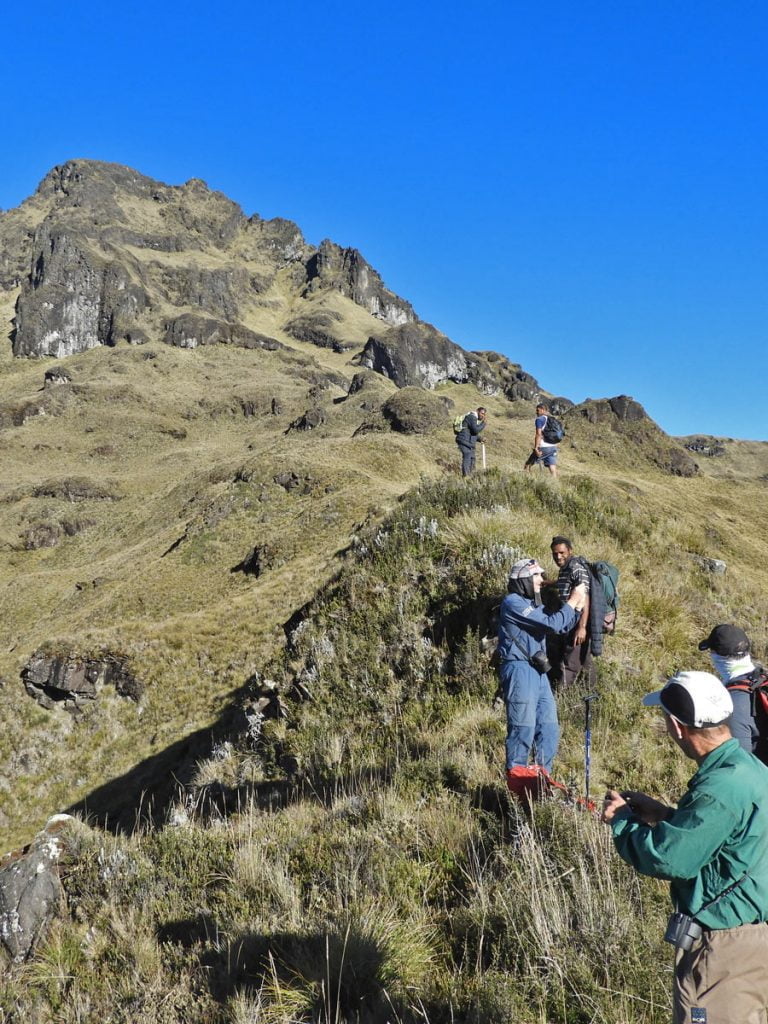
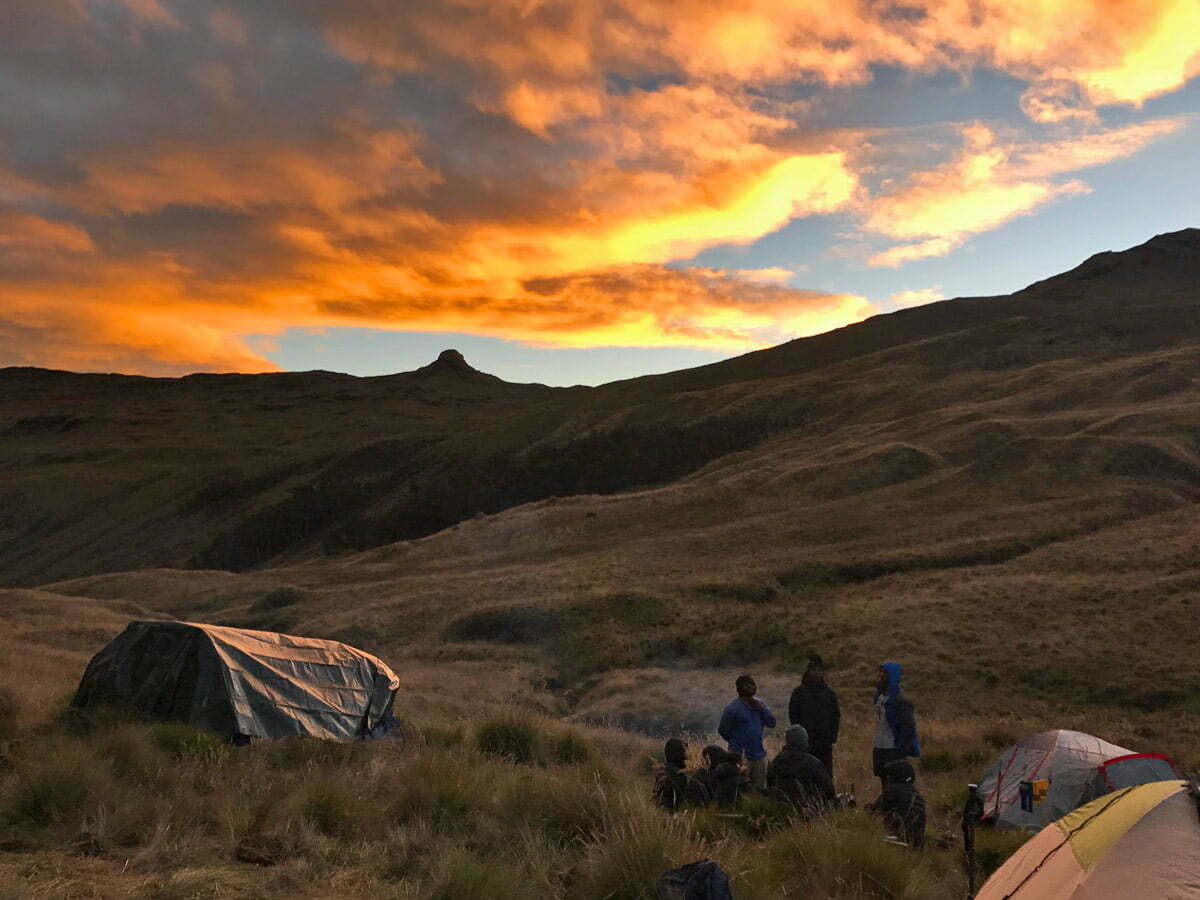
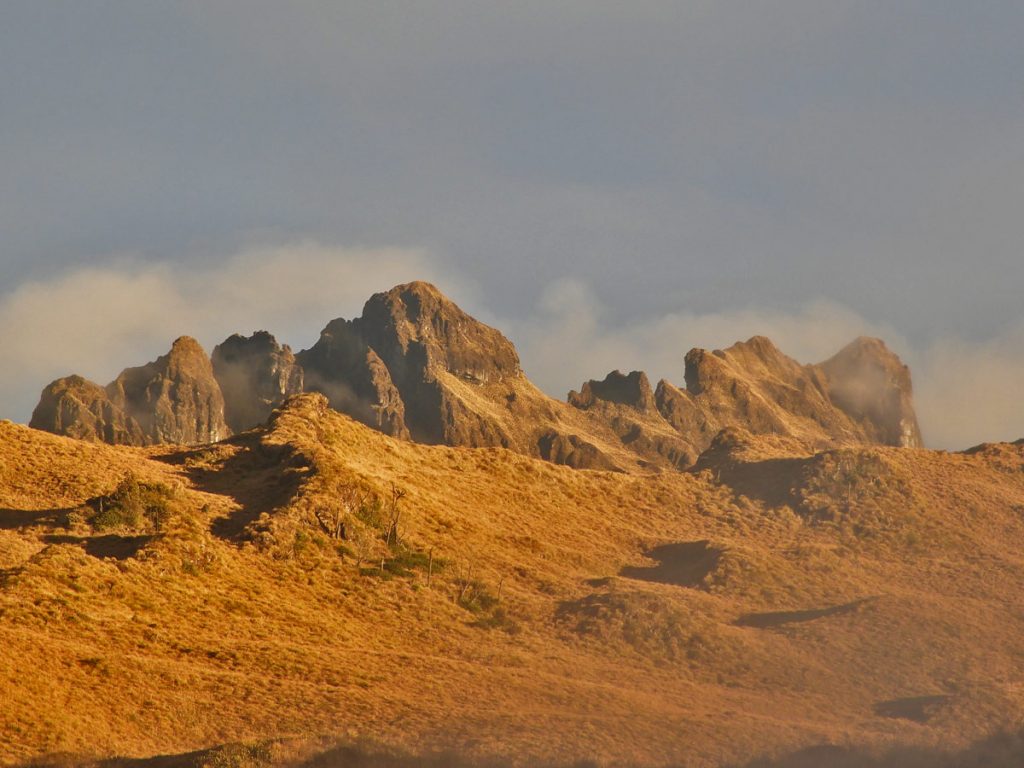
The Journey
Arrive in Port Moresby and transfer to Holiday Inn. Here we will have a briefing about our Mt Giluwe trek, what to expect, last-minute packing and then off to bed.
Port Moresby to Mt Hagen and then onto Melki. We will fly into Mt Hagen which is the main port for the PNG Highlands. From there we will pick up our team and food for the expedition and drive to Melki which is at the base of Mt Giluwe. This small village lives mainly from crops grown in wonderful gardens. Last checks and we are off into the primary rainforest up the side of Giluwe.
After approximately 3 – 4 hours we will be at 3600m above sea level. The thick jungle and the relatively narrow trail makes way for open grassland which is welcome, as the jungle is thick on Giluwe.
Here we will make camp for the night with great views down into the valley below. But the summit of Giluwe is nowhere to be seen, as the massif is huge. (B,L,D)
This is a relatively short day, taking us onto a ridge that will wriggle its’ way toward the summit. Large tarns (lakes left behind by the retreating glaciers that once spilled down from the summit) dot the landscape and rugged peaks now jut from ridgeline to ridgeline. The prominent “Dogs Tooth” (a large and high rocky outcrop) can be seen today. We will end up sleeping in a small gully at approximately 3800m asl. (B,L,D)
This is base camp day. Back up onto the ridge towards two 4000m peaks, but these are not the summit. Mt Giluwe is hidden behind these giants, so we head down into a vast grassy valley, through a boggy landscape, around the giants and into another valley that is enormous. One can only imagine the glacier that once ground its’ way down this valley from the summit. And there it is, to our left, the summit of Giluwe. We will make camp near a small bush outcrop, preparing ourselves for the following day’s summit trek. The camp is at 3900m asl. (B,L,D)
Summit Day. We will rise early and head out along a very narrow trail through the grassland to the saddle that connects the Giluwe Summit with the two other 4000m peaks. Once on the Saddle at just over 4000m, we can see down into an enormous valley on the southern slopes. High cliffs prevail and that route does not look inviting. We will continue on up a narrow and steep gully resting only 150m below the summit. From there, there is a little scramble across a short exposed ridge (approximately 5m long) and then with a grab of grassy tufts, we scramble to the summit with unsurpassed 360-degree views of the PNG Highlands. Mt Wilhelm and Kabangama can be seen to the east and northeast.
Once we have reached the summit it is back to base camp for a rest. After a rest and a meal, we will head back down the mountain to Camp 1 for our overnight stay. (B,L,D)
From Camp 1 we head down to Melki where our transport awaits. We will then transfer to Mt Hagen for our afternoon flight to Port Moresby. (B)
Its time to head home after our great adventure. (B)
Journey Extensions
Check out our Journey Extensions for those that want to stay a little longer or try something different along the way.
A shirt 10 minutes drive from our hotel, the Port Moresby Nature Park is a colourful addition to an PNG getaway. This half day tour showcases PNG’s fascinating wildlife, allowing you to get up close to the Tree Kangaroo, Cassowary, Crocodile, Bird of Paradise and a plethora of parrots and reptiles.
The park’s facilities are world class (including a great little coffee shop so you can buy water and food there if needed) with great enclosures and information signage, and you’ll be fully guided by a park expert throughout.
If you’ve a few spare hours before or after your trip, we highly recommend this tour (the park opens at 8am so you can get there early and do a tour before your flight home).
Per person is $60
Includes: Transfers to and from park and an expert guided tour of the park.
Rabaul is an hour and a half flight away from Port Moresby and is a great town to explore and lots of activities.
You can go snorkelling, cruising, visit the Duke of York Islands or climb a volcano.
There are also bustling markets and great bird watching. A great additional trip for someone who wants to see other areas of Papua New Guinea, but wants to do more than just rest and relaxation.
Price per person is $600.
Nusa Island Retreat in Kavieng, on the island of New Ireland, is only an hours flight from Port Moresby, but feels a world away, with crystal clear waters, incredible scuba diving, snorkelling, fishing and surfing.
After finishing a Kokoda trek, Nusa Island Retreat is the perfect place to recover, and to see a whole new side of PNG.
We can help you with your domestic flights to Kavieng.
Premium Room
Single Room: $330 per person/per night
Double/Twin: $240 per person/per night
Includes all meals and airport transfers
Tufi Resort is an hours flight from Port Moresby and is situated in the world’s largest tropical loch system where palm trees flow all the way down to the water’s edge.
Tufi is a boutique resort, built to overlook the stunning landscape by which it is surrounded.
With access to some of the best SCUBA and snorkelling in PNG, waterfalls, local villages and secluded beaches, Tufi offers excellent accommodation and food for those that want to get away from it all.
After finishing a Kokoda trek or for those want to relax, dive or fish Tufi is a perfect oasis.
Tufi is serviced by flights every second day from Port Moresby.
Check out their website at www.tufidive.com
Accommodation
Deluxe Bungalows (1 queen and 1 single) Sea facing balconies
Single $330
Double $250
Child $140
Deluxe Rooms (Balcony facing resort)
Single $295
Double $210
Standard Rooms (no balcony or sea views)
Single $235
Double $160
Includes all meals, accommodation, return airport, tea, coffee and GST.
Diving
Outer Reef
2 tank outer reef dive $200
3 tank outer reef dive $250
6 tank outer reef dive $460
House Reef Wharf Diving
1 tank wharf dive FOC
2 tank wharf dive $100
3 tank wharf dive $120
Night Wharf Dive
1 night wharf dive $110
Speciality Wreck Dive
Black Jack B17 Bomber $3000 minimum 6 pax Nov-April only
PISTOFF B25 Mitchell Bomber $1800
Includes tanks, air, weight belts, fresh fruit, cold drinks, tea, coffee, cookies, hot showers, towels and GST per person per day.
Snorkelling
Snorkelling on outer reef (per person on Dive Boat) $95
Fishing
Masalai (Shark Cat) 4 hour trip $650 seats 1-6 people. All staff and equipment provided.
Talio Mono Hull 4 hour trip $450 seats 1-4 people. All staff and equipment provided.
Cultural Tours
There are plenty of other Experiences you can take part in at Tufi resort from Full Day Tours, Bird Watching and Lookouts. Chat to the No Roads team if you would like ideas for day tours from Tufi Resort
Less than one hour from Port Moresby is the paradise that is Loloata Island Resort. This beautiful and intimate island is just off the coast of Port Moresby and is home to some of the best island reefs in the world.
If you have friends or family who would like to meet you in PNG after your trek, this is the perfect holiday destination for them.
There are dozens of sunken ships and even an aircraft to explore for SCUBA divers. For snorkelers, there are the reefs of Lion Island.
Each room and suite has a guaranteed ocean view.
Take advantage of the spa facilities onsite, where you can book in your next massage or any other pamper treatment.
For those that don’t want to travel too far away but just far enough to relax after their expedition, Loloata is a perfect place to spend a few days.
Includes
- All domestic scheduled flights within PNG
- 2 nights accommodation in Port Moresby at Holiday Inn
- Government Taxes
- All meals on the expedition component (6 Breakfast, 4 Lunches and 4 Dinners)
- All accommodation outside of Port Moresby
- 1 x Local Guide
- 4 nights of accommodation along the trek.
- Return airport transfers
- Tents and all camping gear such as pots, cups, knives, forks, spoons etc
Excludes
- International airfares
- Travel Insurance
- Tips
Your Guides and Safety
An excellent guide can make the difference between a trip of a lifetime and just an ordinary trip. Our handpicked professionals come from a range of backgrounds. Each has extensive outdoor and hiking experience and a passion for the beautiful place that is Papua New Guinea. The guide will ensure that your trip is truly inspiring, a huge amount of fun, and safe. All guides are trained in Safety First Aid and are connected to our Port Moresby and Melbourne offices by satellite phone.
Accommodation
Noone lives on Giluwe. As such there are no permanent man-made shelters along the way to base camp, so our accommodation will be in tents.
In Port Moresby, we will be staying at the very nice Holiday Inn.
“Every mountain and peak for 100 miles around was visible above cloud-filled valleys. The morning sun created stark contrasts as it rose”
Michael Leahy 1934, PNG

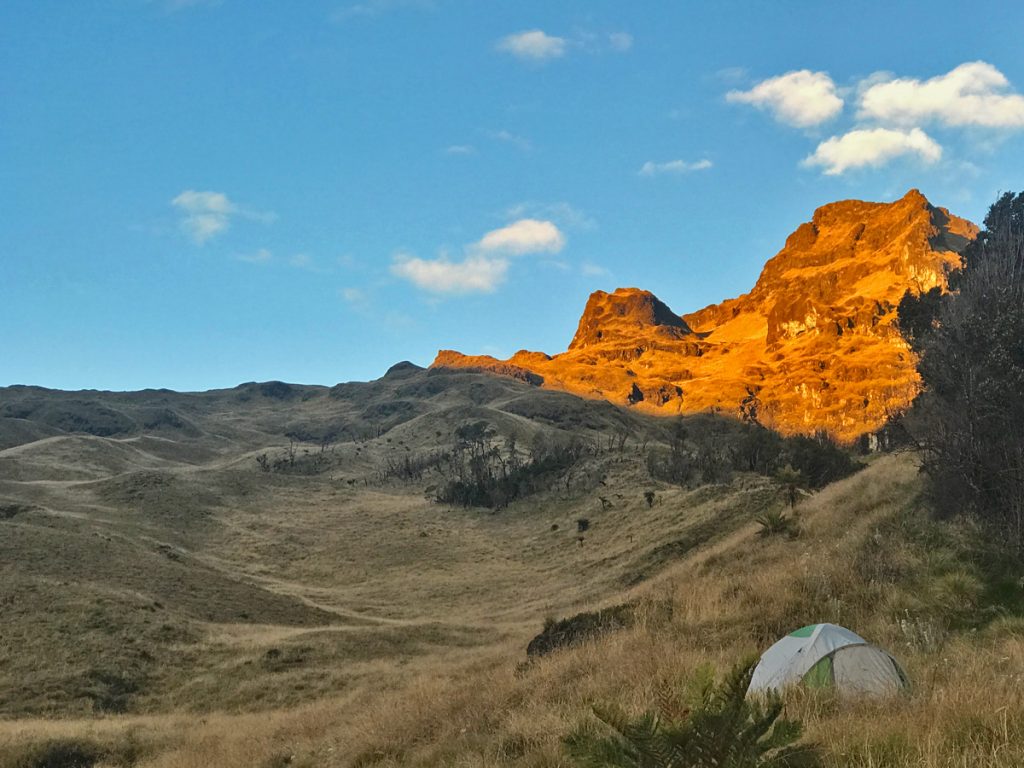
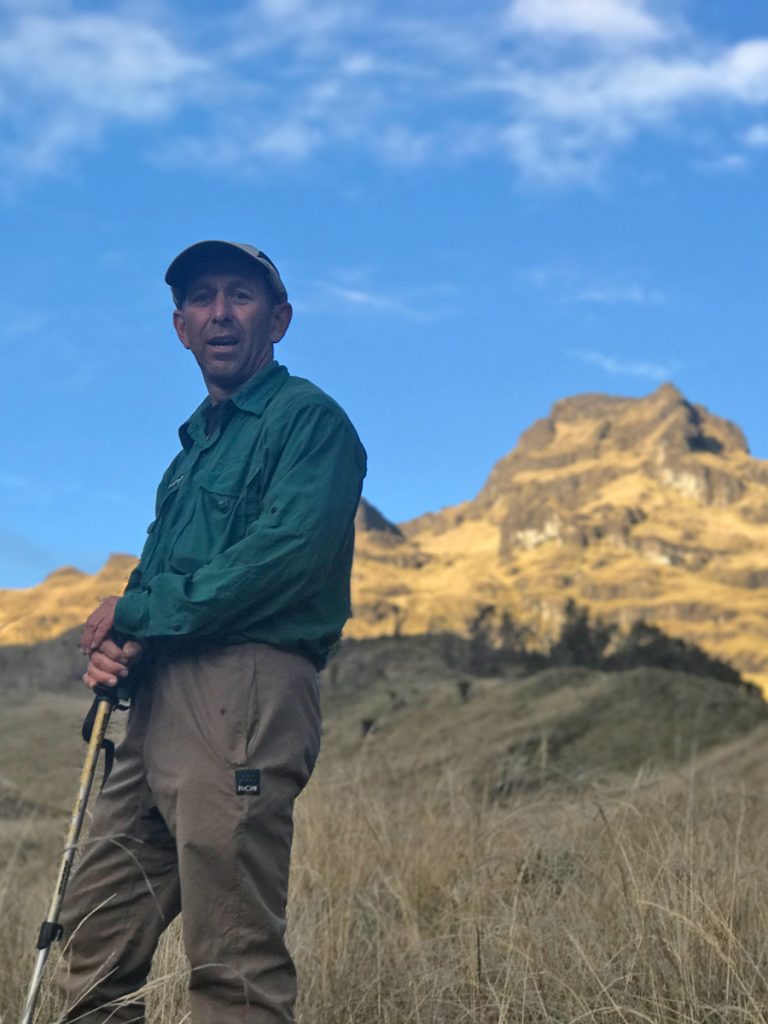
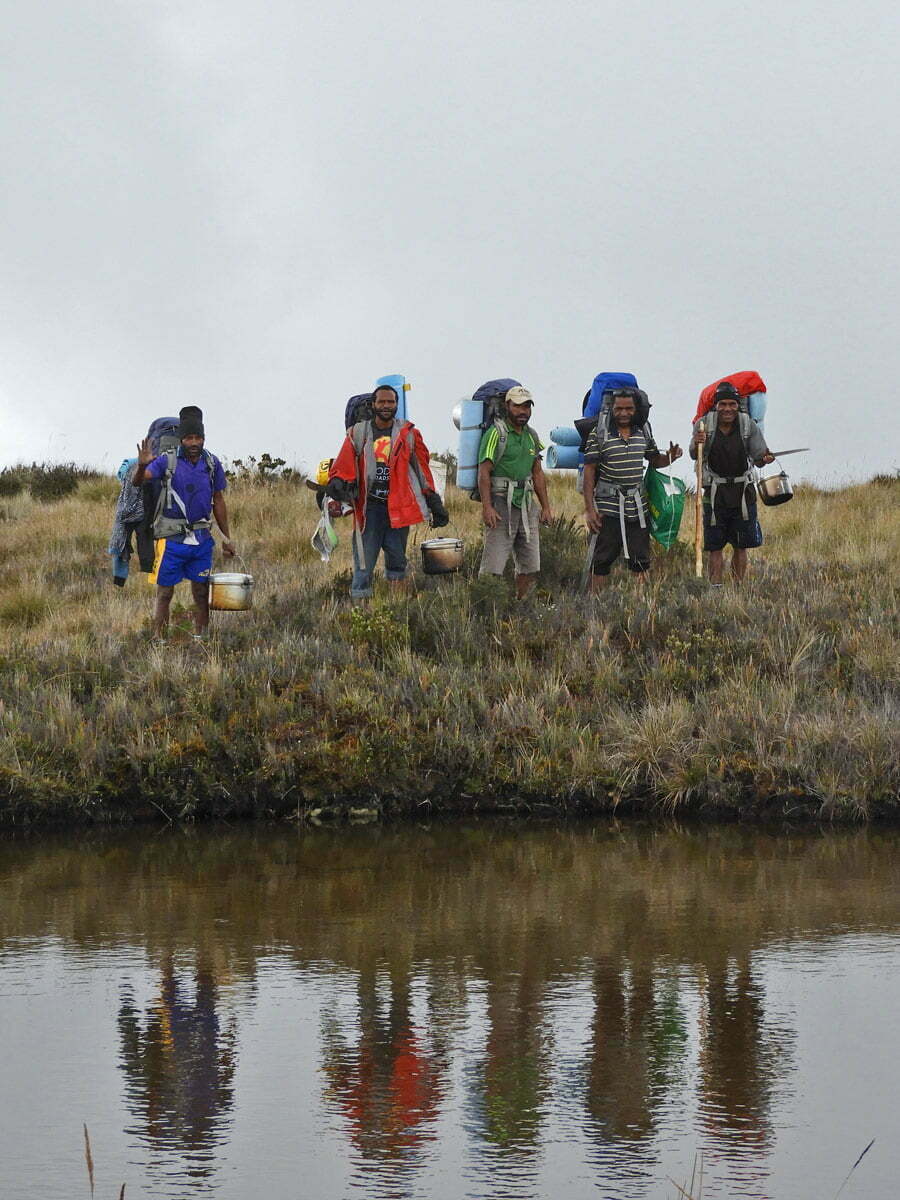
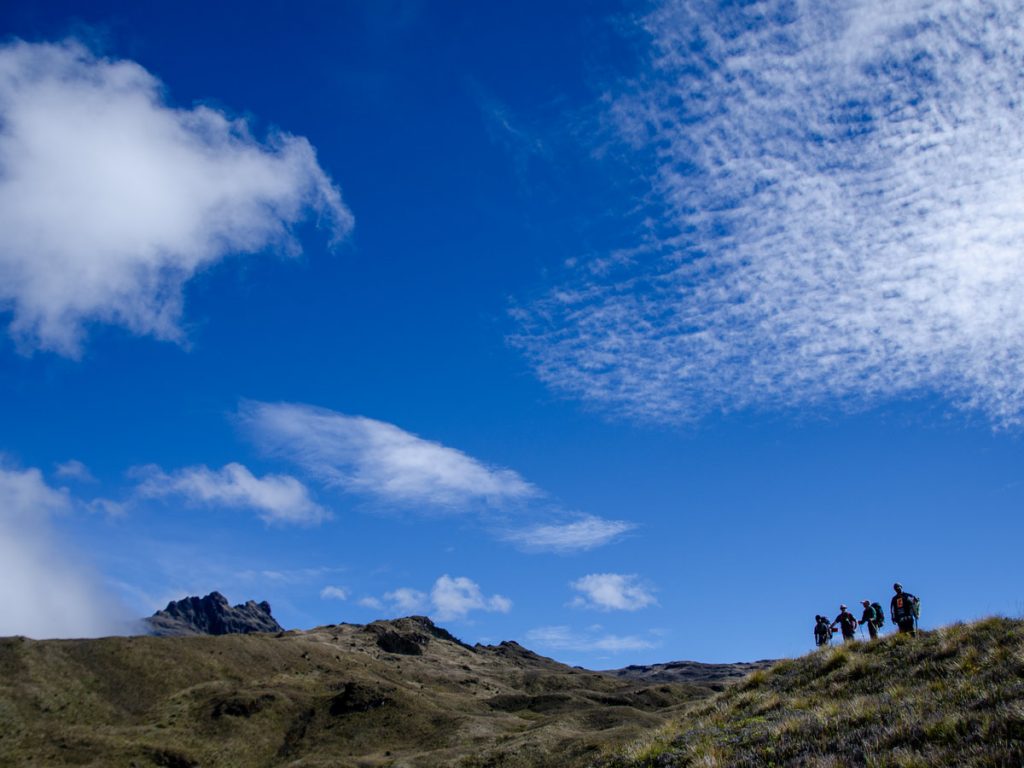
The top of Giluwe was once under 150 meters of ice and an enormous ice cap, 100 km² covered the massif. You can easily visualise this glaciated period when walking up the various ridges that form the mountain.
Life on the Mountain
Mt Giluwe is a remote part of a remote country. From the road head, we will see no man-made structures. From about 3600m the forest gives way to open grassland. Thus we are exposed to the elements. Water is plentiful but firewood is not.
At night the temperature can drop below zero. Frost and occasional snow have been witnessed. Strong, cold winds are common and rain and mist can occur suddenly turning visibility to only a few metres.
The sky around Giluwe is usually clear in the early morning, but by 9 am the fog that is laying low in the valley lifts. Large cloud formations gather at higher altitudes and by midday intermittent mist and showers occur, usually until sunset. Summit attempts are usually made around 1 am to avoid the mid-morning clouds. Views from the summit at sunrise are simply awesome.
The Geology of Giluwe
The original volcano on the site of Mount Giluwe formed roughly 650,000–800,000 years ago, probably as a stratovolcano of similar height to the current peak.
Extensive Pleistocene glaciation eroded away much of the peak, leaving a series of volcanic plugs which form the present-day summits. A renewed episode of extensive volcanic eruptions formed the shield-like bulk of the current mountain between 220,000–300,000 years ago, and there is evidence that some of the lava erupted subglacially.
During the last glaciations of the Ice Age, the upper slopes were covered by a massive ice cap over 150 m (500 ft) thick, from which only the main and east peaks protruded as nunataks above the ice surface. At its maximum extent, the ice cap was over 15 km across and covered an area greater than 100 km².
Outlet glaciers extended down as low as 3,200–3,500 m (10,500–11,500 ft), leaving a variety of deposits including glacial till and moraines. Although the glaciers are now long gone, numerous cirques and U-shaped valleys remain visible. The present-day climate on the summit plateau above roughly 3,400 m (11,150 ft) is cold enough for nightly frosts and the occasional snowfall.



